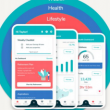The digital wealth opportunity

Karl Loudon is managing director at TRW Digital
With the recent pension reforms opening up a plethora of investment options, financial services providers need to capitalise on the opportunity to create a value-led digital customer proposition writes Karl Loudon.
In the face of an ageing population and an increasingly technology-driven culture, those in the business of helping people to manage their money are seeing unprecedented changes to behaviour of their clients. When it comes to financial management, users are being offered a variety of options, not only in where funds are placed, or how they manage their wealth, but also in the facilities they use to manage it.
From the basic understanding of the impact of their retirement plan, through to managing complex, global investment options, users are demanding digital tools that can handle the complexities of choice, whilst adding value to a service. This month’s reform shows the biggest shake up of the pensions industry in decades, as pensioners now have the power to access their pensions savings, and a plethora of options as to how to manage their money. This has created an opportunity for wealth management businesses to provide greater value to their clients.
How can wealth managers provide greater value to clients?
By providing the right tools to help clients manage their financial future effectively, wealth management providers can create trust and add real value to their client relationship, creating a value-led digital customer proposition in the process.
The solution is to offer a digital self-serve modelling tool that allows users to manage these new options and choices. With a self-serve tool, control is put squarely in the hands of the individual, relieving pressure from client enquiries whilst fuelling a demand for more specialist advice and support.
Empowering users
Modelling tools help users feel empowered and in control of their finances through providing the ability to manipulate data. Users can see the range of possible options; from looking at pension outputs vs life expectancy, or investment risk vs return, to understanding the impact of releasing equity vs taking in a regular income. These tools can then help clients and advisers understand forecasts and projections, leading to more informed choices being made. Even with multiple income streams, visually simple slider bars and salary scales can help users to instantly view results, improving their understanding of more complex financial data, whilst keeping them notified of the options available to them.
Accessibility and integration
Providing value to a multi-device audience, these tools can allow clients to log in anywhere, input fresh information, or make more accurate timely decisions offering the best user-experience to the connected user by serving up the most relevant information required at each touchpoint, connecting a variety of platforms, integrating with back-end APIs to provide information in real-time.
Simplicity and design
Any modelling tool shouldn’t overwhelm the user, providing a functional yet visually engaging tool is what users expect. Incorporating features like interactive visual mapping presents results to be interpreted easily. The goal is to provide an intuitive product, which feels comfortable to use, but looks and feels like a tool which users would be happy to interact with regularly.
The impact
Wealth Management companies will see the use of digital modelling tools increasingly important for the cultivation of the pensions reform in particular. This huge market shift will help users in the initial choice stage, with more options available to them they can instantly compare and contrast, perhaps under the guidance of a financial planner. Furthermore, it will see the need for ongoing tracking and monitoring tools to help users understand the performance of their funds.
The future
The future for wealth management may see a multitude of fund sources needing to come together, collaborate and even merge. Whilst we don’t have a clear picture of what the pension reform will bring, we do know that the options and choices have increased significantly, and this could mean that multiple streams of data to be integrated into a single view.
Financial IT professionals need to maintain a competitive edge by seizing this opportunity to prepare their business now for the fall out of the pension reforms, and give their clients and business the flexibility and adaptability needed to future-proof their service offerings.











































